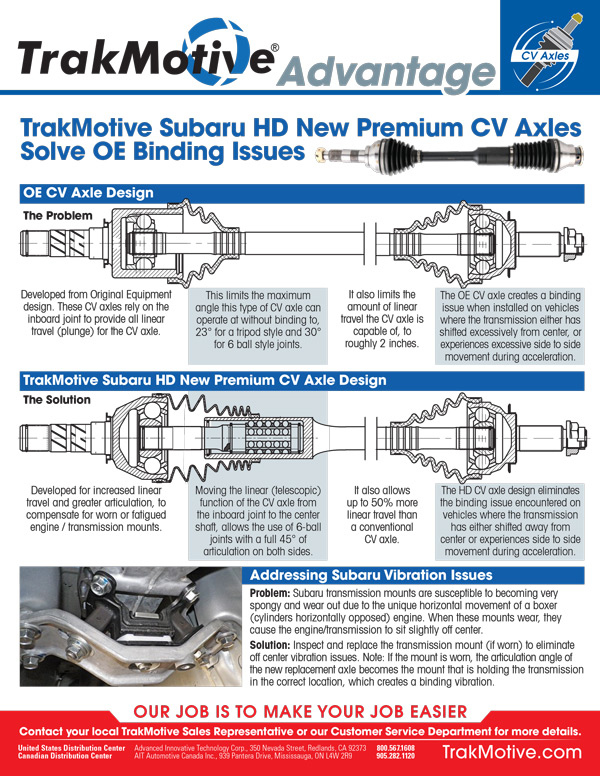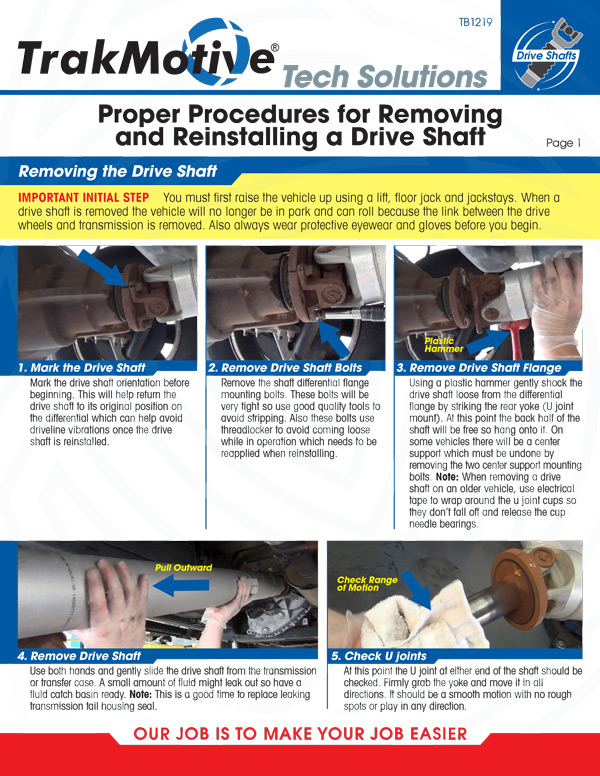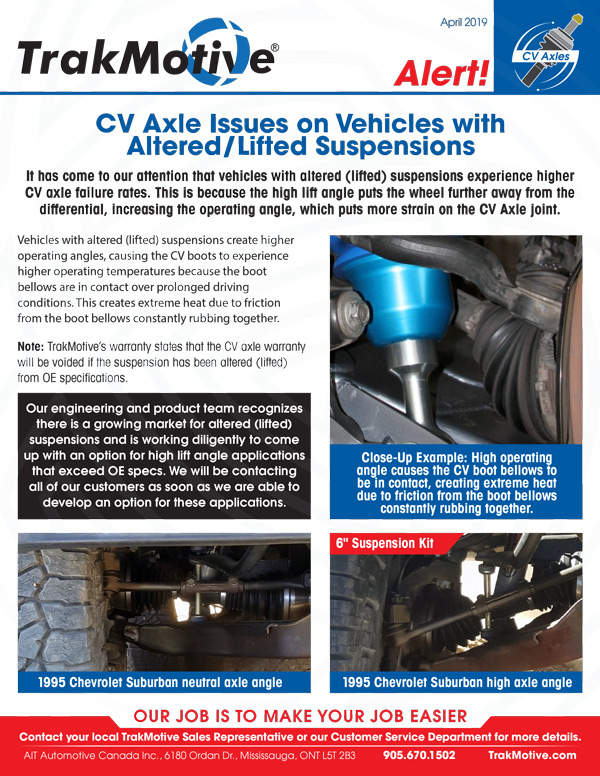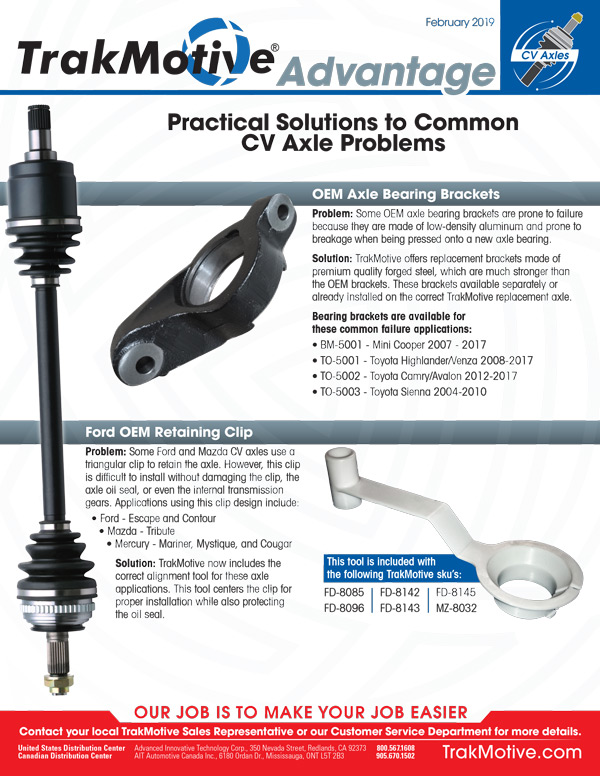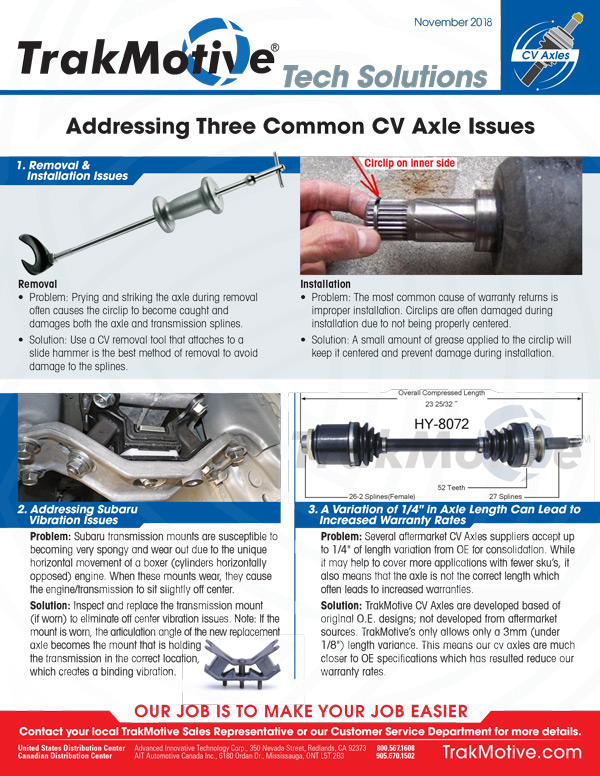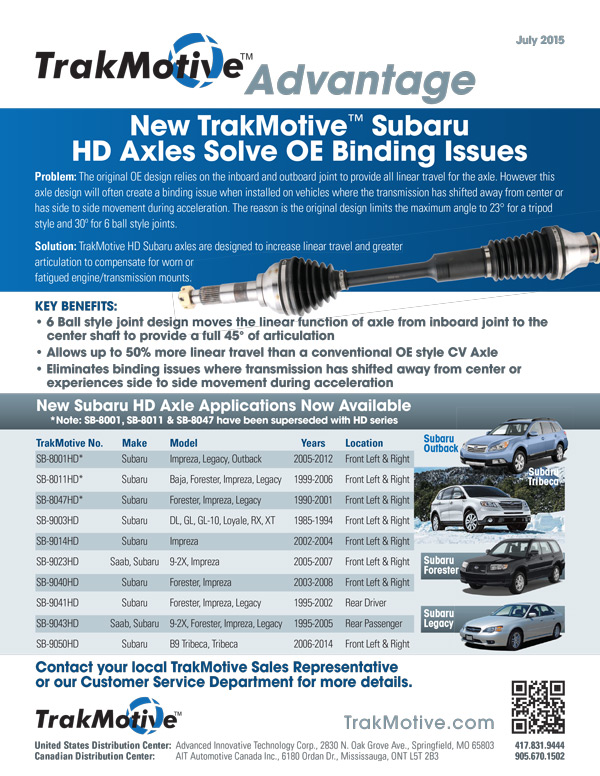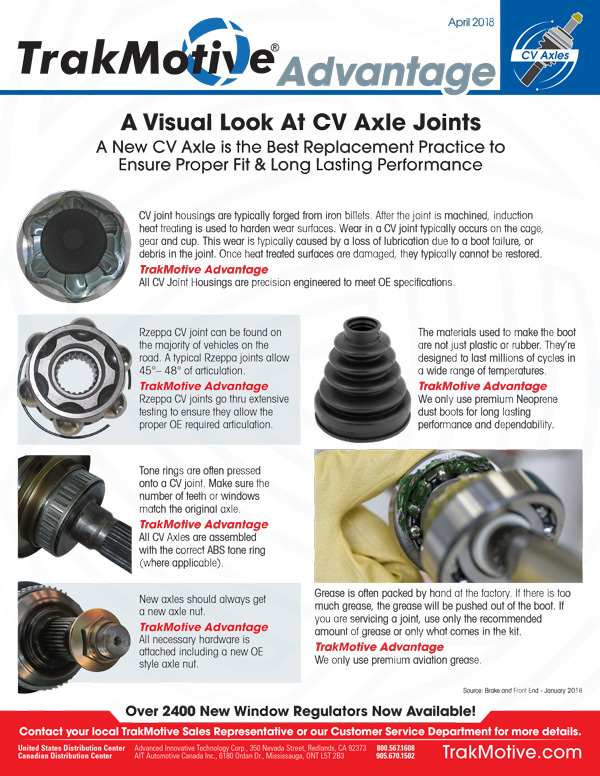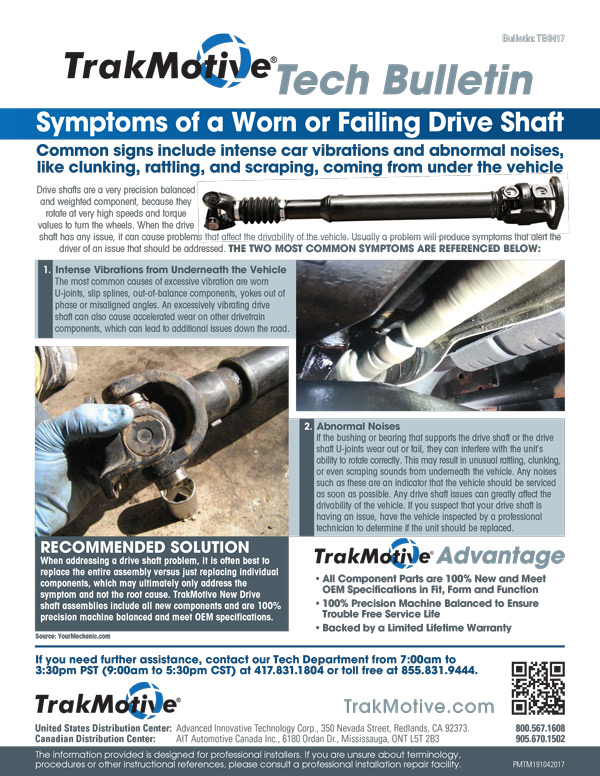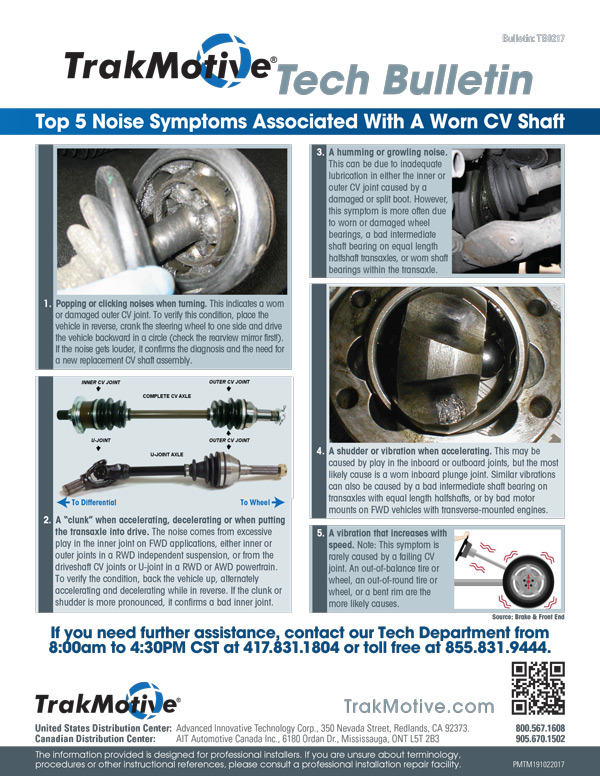The Problem Developed from Original Equipment design. These CV axles rely on the inboard joint to provide all linear travel (plunge) for the CV axle. This limits the maximum angle this type of CV axle can operate at without binding to, 23° for a tripod style and 30°...
Never Miss an Update!
Follow & like us on social to stay up-to-date with all of the most recent news & updates.
Tech Bulletins
12/2019: TrakMotive Proper Procedures for Removing and Reinstalling a Drive Shaft
Removing the Drive Shaft IMPORTANT INITIAL STEP You must first raise the vehicle up using a lift, floor jack and jackstays. When a drive shaft is removed the vehicle will no longer be in park and can roll because the link between the drive wheels and transmission is...
04/19: CV Axle Issues on Vehicles with Altered/Lifted Suspsensions
CV Axle Issues on Vehicles with Altered/Lifted Suspensions It has come to our attention that vehicles with altered (lifted) suspensions experience higher CV axle failure rates. This is because the high lift angle puts the wheel further away from the differential,...
02/2019: Practical Solutions to Common CV Axle Problems
Practical Solutions to Common CV Axle Problems OEM Axle Bearing BracketsProblem: Some OEM axle bearing brackets are prone to failure because they are made of low-density aluminum and prone to breakage when being pressed onto a new axle bearing. Solution: TrakMotive...
11/2018: TrakMotive Addressing Common CV Axle Issues
Removal & Installation Issues Removal Problem: Prying and striking the axle during removal often causes the circlip to become caught and damages both the axle and transmission splines. Solution: Use a CV removal tool that attaches to a slide hammer is the best...
11/2018: Addressing Subaru HD Axle OE Binding Issues
TrakMotive™ Subaru HD Axles Solve OE Binding Issues Problem: The original OE design relies on the inboard and outboard joint to provide all linear travel for the axle. However this axle design will often create a binding issue when installed on vehicles where the...
04/2018: A Visual Look At CV Axle Joints
A Visual Look At CV Axle Joints A New CV Axle is the Best Replacement Practice to Ensure Proper Fit & Long Lasting Performance CV joint housings are typically forged from iron billets. After the joint is machined, induction heat treating is used to harden wear...
4/2017: Tech Bulletin – Symptoms of a Worn or Failing Drive Shaft
1. Intense Vibrations from Underneath the Vehicle. The most common causes of excessive vibration are worn U-joints, slip splines, out-of-balance components, yokes out of phase or misaligned angles. An excessively vibrating drive shaft can also cause accelerated wear...
2/2017: Tech Bulletin—Top 5 Noise Symptoms Associated With a Worn CV Shaft
1. Popping or clicking noises when turning. This indicates a worn or damaged outer CV joint. To verify this condition, place the vehicle in reverse, crank the steering wheel to one side and drive the vehicle backward in a circle (check the rearview mirror first!). If...

